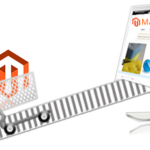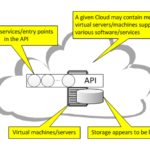Every year, new technologies, software, and applications are developed that are designed to make work and life easier for mobile workers. The current boom of digital-savvy-employee has changed the way people work. Business users are turning to software and applications that enable them to work from anywhere, and reap the benefits of increased mobility. This movement is radically altering the types of applications that enterprises need to provide for their employees. The younger generations’ mobile-first approach is fuelling an explosion in mobile working – to the point where it is now an integral part of most businesses.
Businesses struggle to adopt and implement various technologies that will allow secure delivery of work apps and data to devices that are not corporate-owned. This is where a mobile workspace comes in. A mobile workspace is a portable, always on, always connected working environment that follows an employee no matter where they go, no matter what device they chose to use, and no matter what connectivity they happen to be leveraging. What’s great is that this mobile workspace gives people access to all of the content they need to get their work done on the same devices that host personal content.
BYOD strategies
Business continuity through a disaster relies heavily on communications strategies for both efficiency and safety. Company leaders have to be able to reach out to employees, and advances in mobility are helping firms maintain workloads through a crisis with remote connectivity and mobile apps that allow employees to keep doing their jobs. The continued investment into BYOD strategies in particular is helping to drive the value of mobile in continuity efforts, and more businesses are realizing where the right policy can support their disaster recovery planning.
The most damaging thing any business can face is prolonged downtime. This cuts profits directly, affects workflow, hinders customer service and hurts the brand integrity for any company. BYOD is helping to enable mobile workflows that allow companies to swiftly and efficiently eliminate downtime as a worry, or at least minimize it to the point where, even if a natural disaster has damaged it's home office, work can continue.
Provisioning secure and easy-to-use cloud applications
To successfully meet employees’ needs, businesses and their IT groups must consider enterprise-grade cloud collaboration applications. In the immediate future, this will enable companies to dramatically reduce the volume of emails being sent and received, by enabling multiple users to work simultaneously on one document. Employees can accurately compare versions of a document to instantly see what changes have been made; make direct comments on a document with all collaborators retaining visibility and auditability of the conversations; or make comments within a group, ensuring that all conversations are in context and document-centric.
The new generation of collaboration tools ensures that all users can view a single version of the truth and that everyone has access to the latest version. Further still, users are notified of any changes – preventing long email trails and reducing the time it takes to track down various versions of documents. Over the next five years these file sharing and collaboration applications will drive advances in cloud content management and usher in a new era of applications that drive productivity due to their simplicity and ease-of-use.
The onus is firmly on IT to strike a balance between user demands and the company’s data security requirements. IT must keep up with the fast-paced shifts in mobility trends and proactively introduce file sharing and collaboration applications that benefit both users and the organization. Doing this effectively will ensure users no longer feel compelled to keep the IT group in the dark about what they’re doing, as they are being provided with everything they need to get their job done.
The first step in achieving this harmony is to reassess the tools being offered to users and cooperate with employees to gain a deeper understanding of the file sharing and collaboration solutions they prefer to use. IT can then ensure relevant applications are built from the ground up to meet the bespoke needs of both employees and the firm. Only when this is achieved will the organization begin to realize the true benefits that file sharing and collaboration applications can bring to the business.
Enabling collaboration & maintaining data control
With many businesses having invested huge amounts in Enterprise Content Management (ECM) and Document Management Systems (DMS), which hold years of corporate information and intellectual property, it no longer makes sense to go through costly ‘rip and replace’ processes. IT groups should look at ways to extend their valuable IT infrastructure by implementing file sharing and collaboration applications that integrate with existing systems. This approach will help IT become enablers, allowing knowledge workers to collaborate, while maintaining an audit trail of content being shared via mobile devices and exert some level of control IT groups need to fulfil their role as the guardians of company data.
TMO Group provide enterprise mobilility solutions. We can help you to build your mobile commerce. More details please send us an email!






